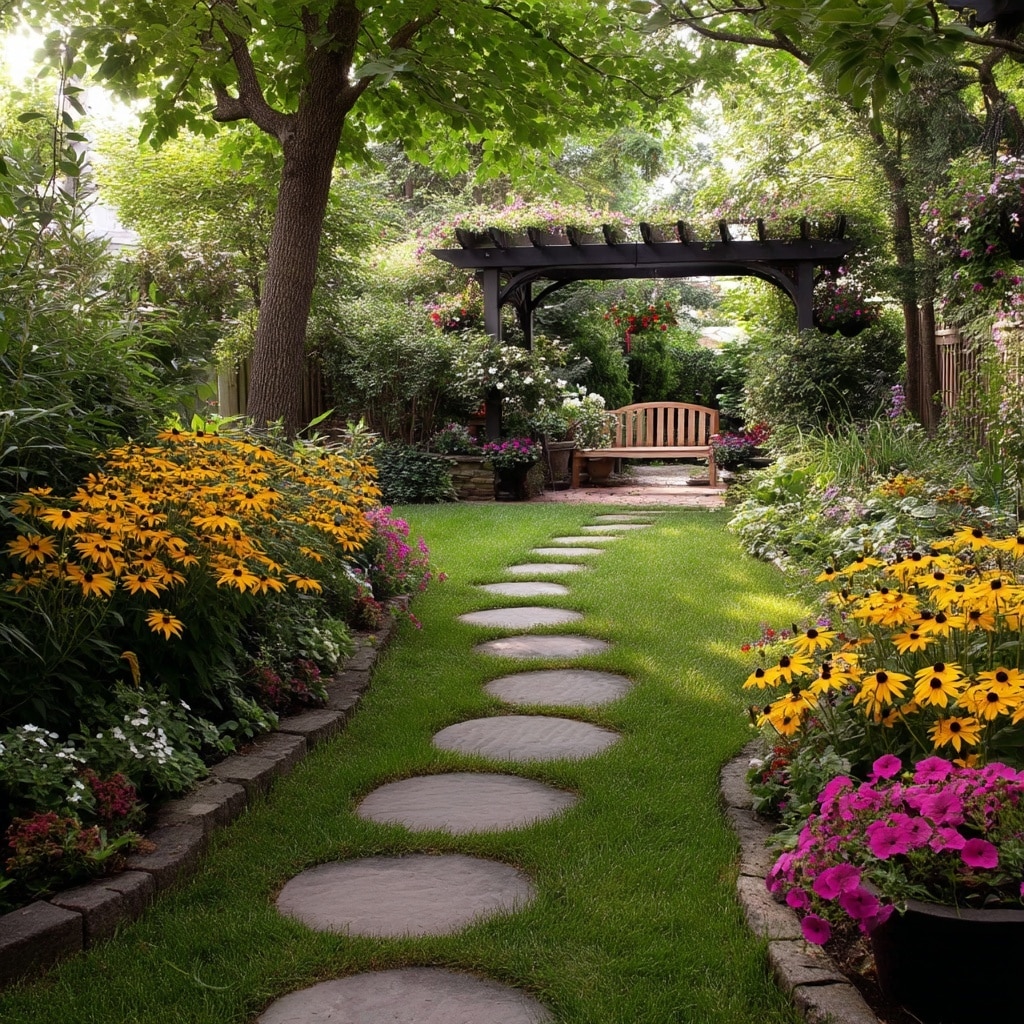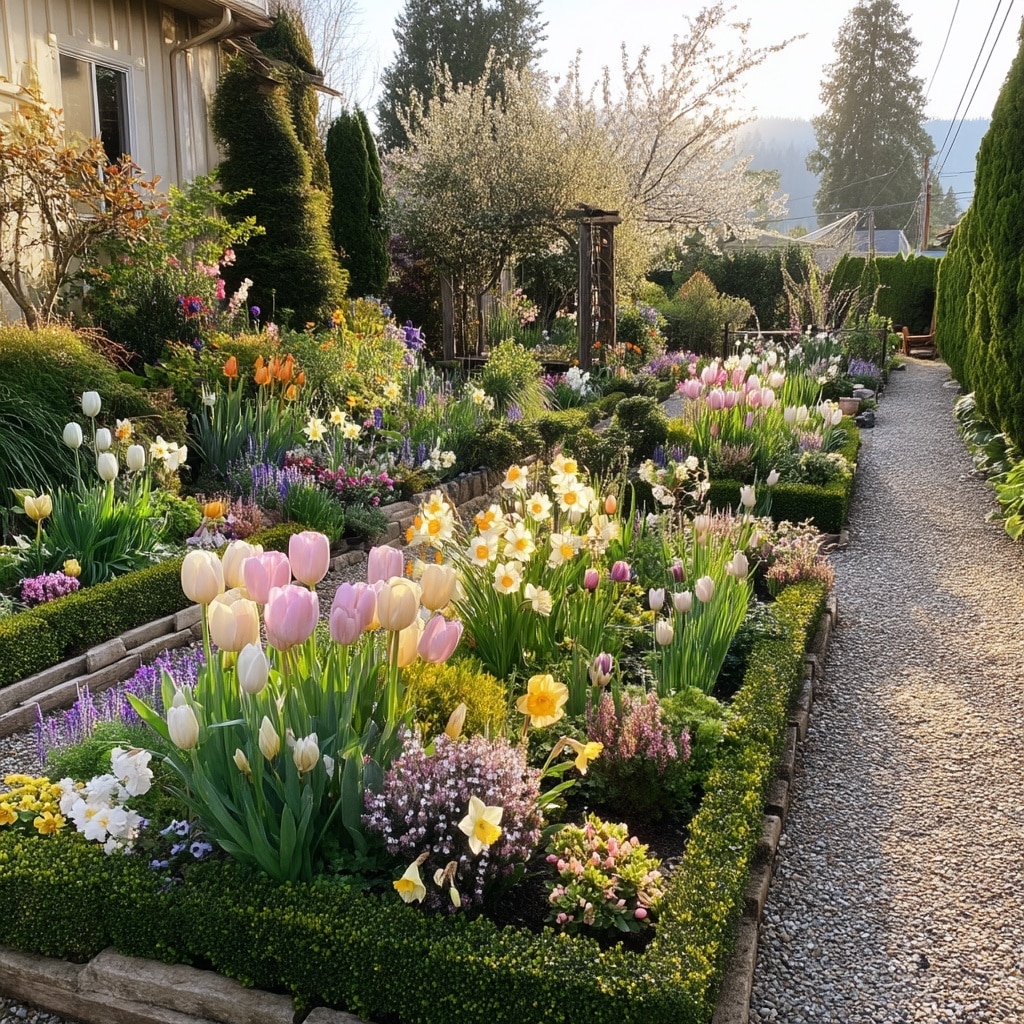Garden ideas bring life, color, and creativity into outdoor spaces, transforming plain yards into vibrant retreats. Whether you’re working with a sprawling backyard or a compact side path, the right design approach can make every square foot bloom with personality. From curving flower beds to sculptural evergreens and cozy seating areas, there’s no shortage of inspiration when it comes to refreshing your landscape. These garden ideas are tailored to spark your imagination while keeping practicality and beauty in perfect balance.
Table of Contents
1. Welcome Spring with Colorful Layers
Spring offers one of the best opportunities to put classic garden ideas into practice. After months of muted tones, early-blooming flowers like tulips and daffodils create a bold splash of color in your landscape. Think in layers: plant shorter blooms like pansies and crocuses near the front of your beds, while taller varieties such as foxgloves or alliums add height in the back.
Don’t limit yourself to in-ground plantings. Decorative containers filled with hydrangeas or hyacinths can be moved throughout the season to highlight different areas of your garden. For larger beds, consider installing a low hedge of boxwood to create visual breaks, or adding a gravel path that invites people to wander through the blooms.
2. Use Curves to Soften Your Landscape
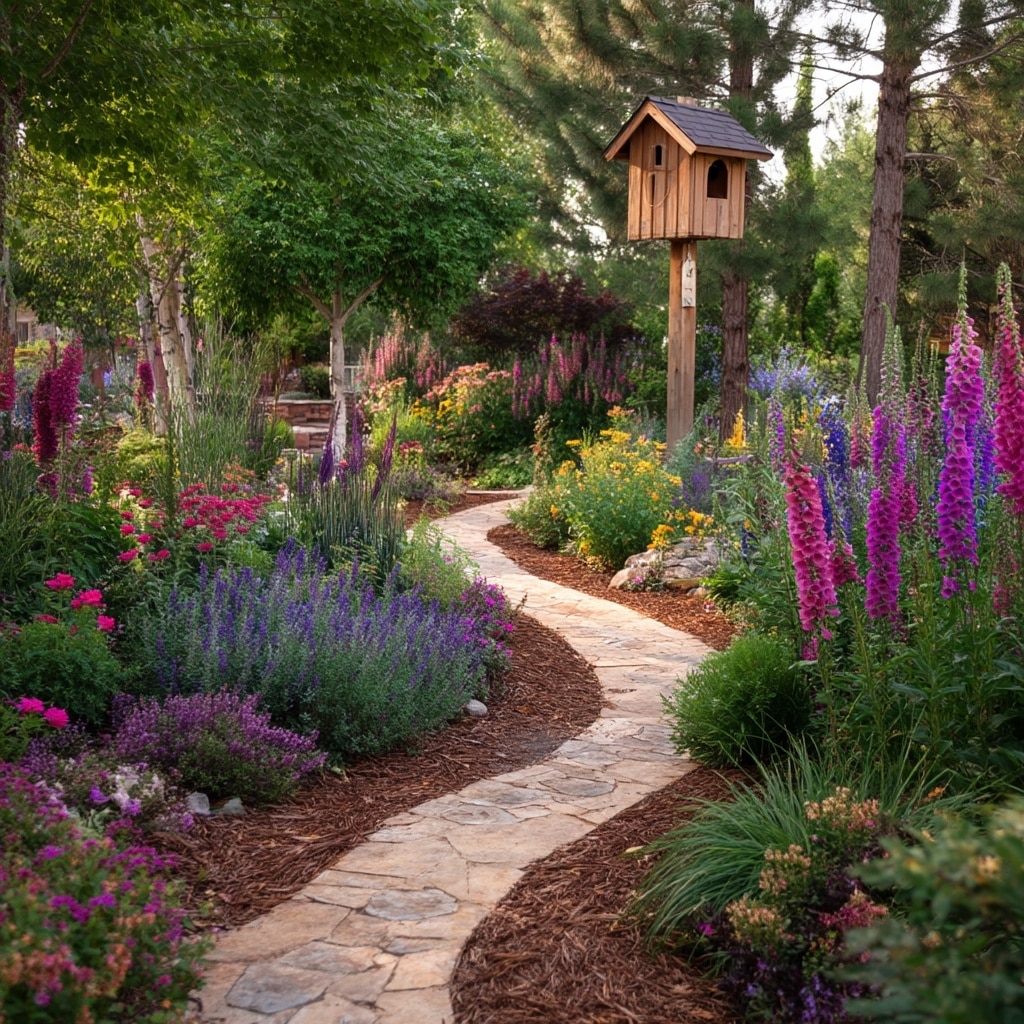
Curving borders are one of the most timeless garden ideas when it comes to adding softness and movement to your outdoor space. Unlike straight edges, gently winding flower beds mimic the natural flow of landscapes and can make even small gardens feel more expansive.
Line the curves with plants in complementary tones — think lavender, pale pinks, and soft purples for a calming effect. This kind of color harmony makes the space feel intentional and cohesive. To add structure without overwhelming the natural feel, install round paving stones or gravel paths that mirror the bed’s shape.
Don’t forget to add a focal point. A tall birdhouse, trellis, or sculptural shrub placed within or just beyond a curve can draw the eye and give your garden added dimension.
3. Follow the Rule of Three for Visual Harmony
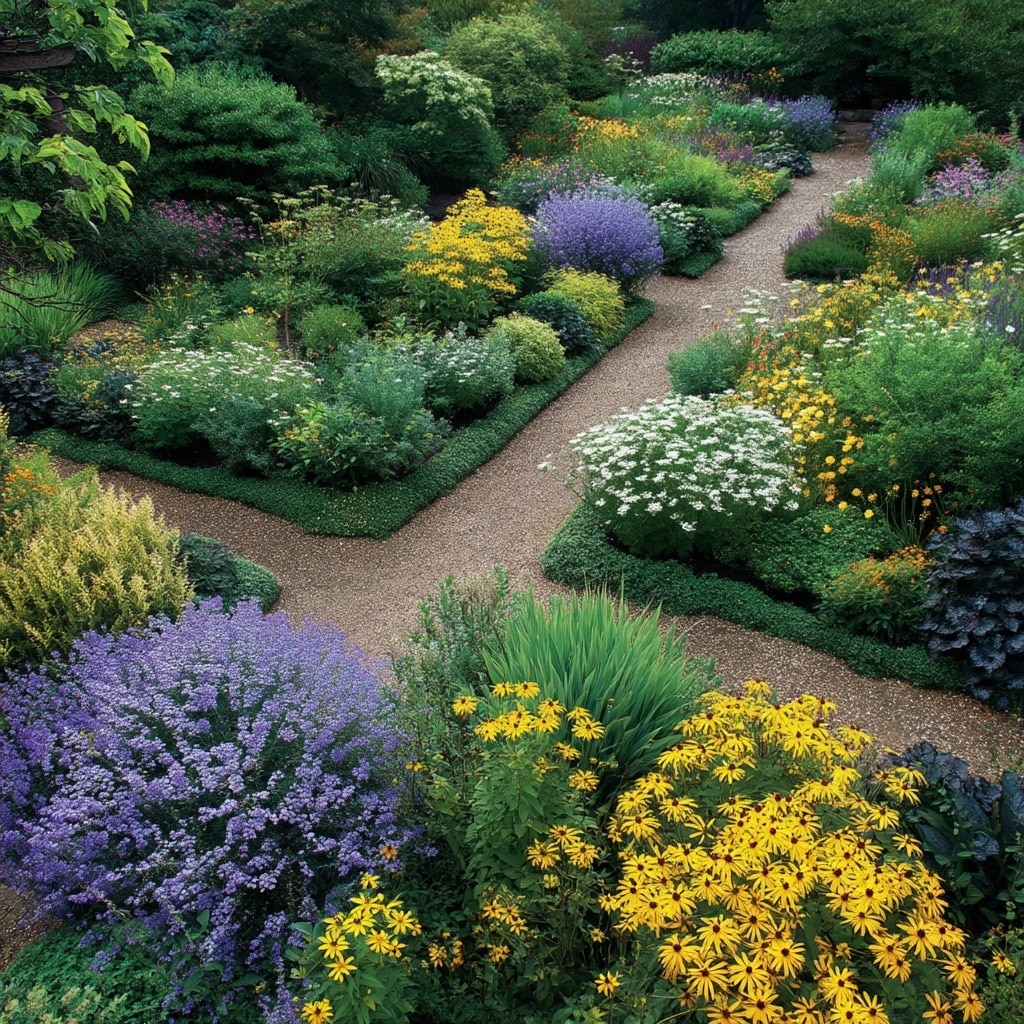
One of the simplest yet most effective garden ideas is grouping plants in sets of three. Repetition creates rhythm and helps your flower beds feel intentional rather than chaotic. Whether you’re working with tall grasses, blooming perennials, or ornamental herbs, planting them in odd-numbered groupings — especially threes — gives your landscape a balanced and pleasing look.
In larger beds, stagger these trios across the space to create natural movement and guide the eye. For example, three clumps of black-eyed Susans at different points in a border can form a cheerful yellow thread through the garden. To soften the transitions between groupings, use low growers like catmint or creeping thyme along the edges.
This method works especially well when combined with loose pathways made of gravel or bark, allowing you to move easily around your garden while keeping the design cohesive.
4. Create Garden Rooms for Rest and Connection
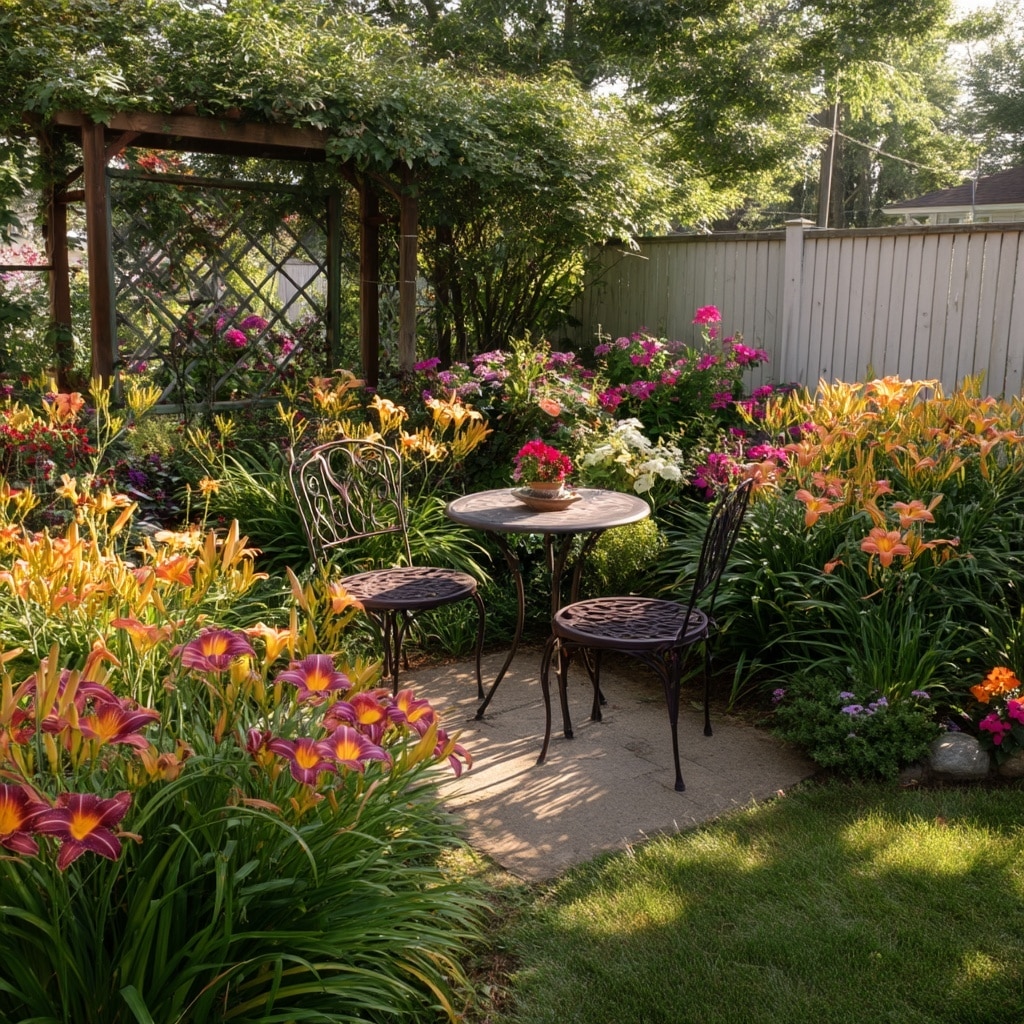
Among the most rewarding garden ideas is designing spaces meant not just for looking, but for living. A small seating area tucked within a bed of flowers can transform your garden into a place of rest and connection. Whether it’s a bistro table for morning coffee or a shaded bench for afternoon reading, integrating seating with blooms encourages time spent outdoors.
Surround your seating with sun-loving perennials like daylilies, coneflowers, or coreopsis. Choose one type of flower in multiple colors — for example, pink, yellow, and white daylilies — to create variety without losing unity. Keep the planting dense to discourage weeds and preserve soil moisture, especially near high-traffic areas.
Hardscape features like trellises or decorative fencing can offer privacy and visual boundaries while blending seamlessly into the overall landscape. It’s a practical way to turn your yard into a personal retreat.
5. Add Flow with Pathways and Focal Points
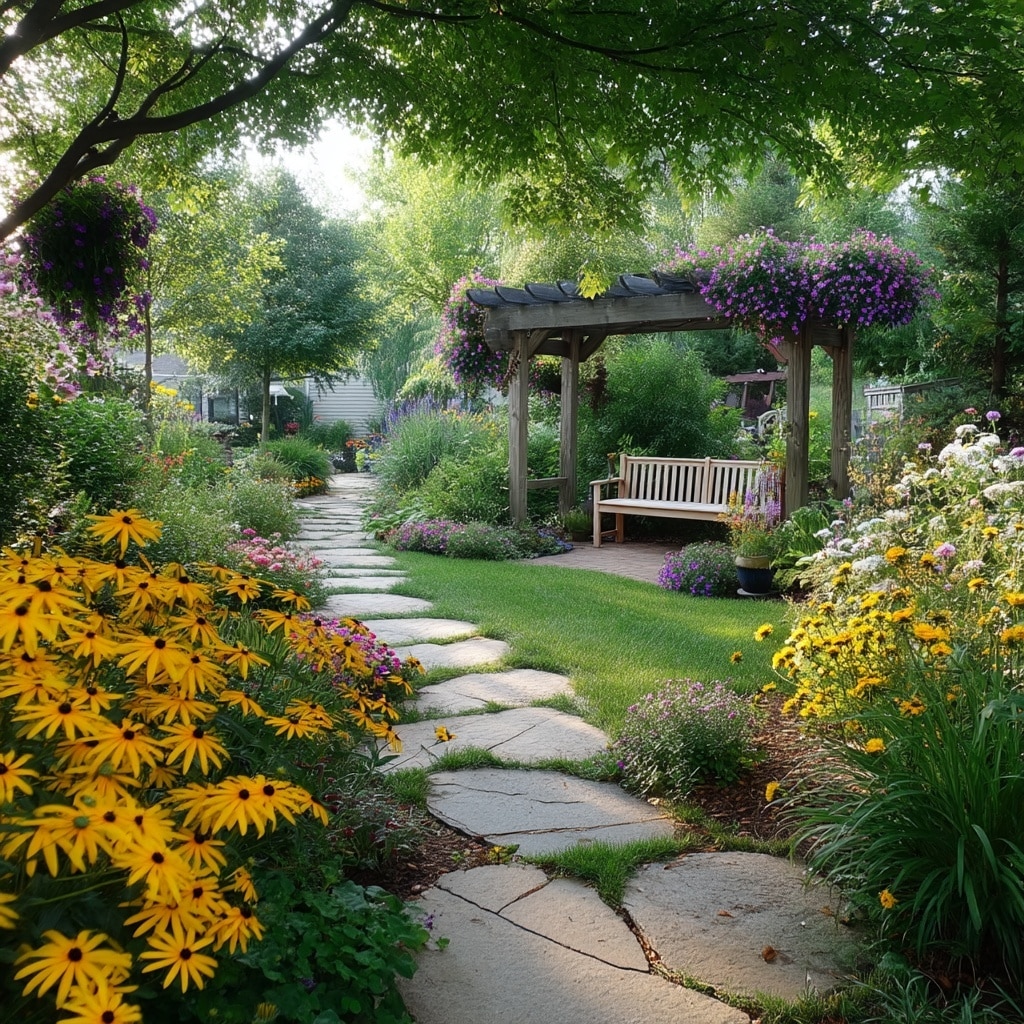
Great garden ideas don’t just focus on what you plant — they consider how you move through the space. Curved paths made of gravel, stepping stones, or wood chips invite exploration and help define planting areas. These walkways break up larger beds, make maintenance easier, and turn your landscape into a garden you can walk through, not just admire from a distance.
To bring energy and life into your path areas, include bold, nectar-rich flowers like black-eyed Susans or lavender petunias. These not only brighten the edges but also attract butterflies, bees, and birds. Position a garden bench or arbor along the bend to create a natural stopping point that draws the eye and encourages pause.
If space allows, anchor one end of your path with a small tree, like a Japanese maple, to introduce height, shade, and seasonal interest. The mix of texture, structure, and color makes your garden feel both designed and alive.
6. Blend Perennials with Hardscape for Lasting Impact
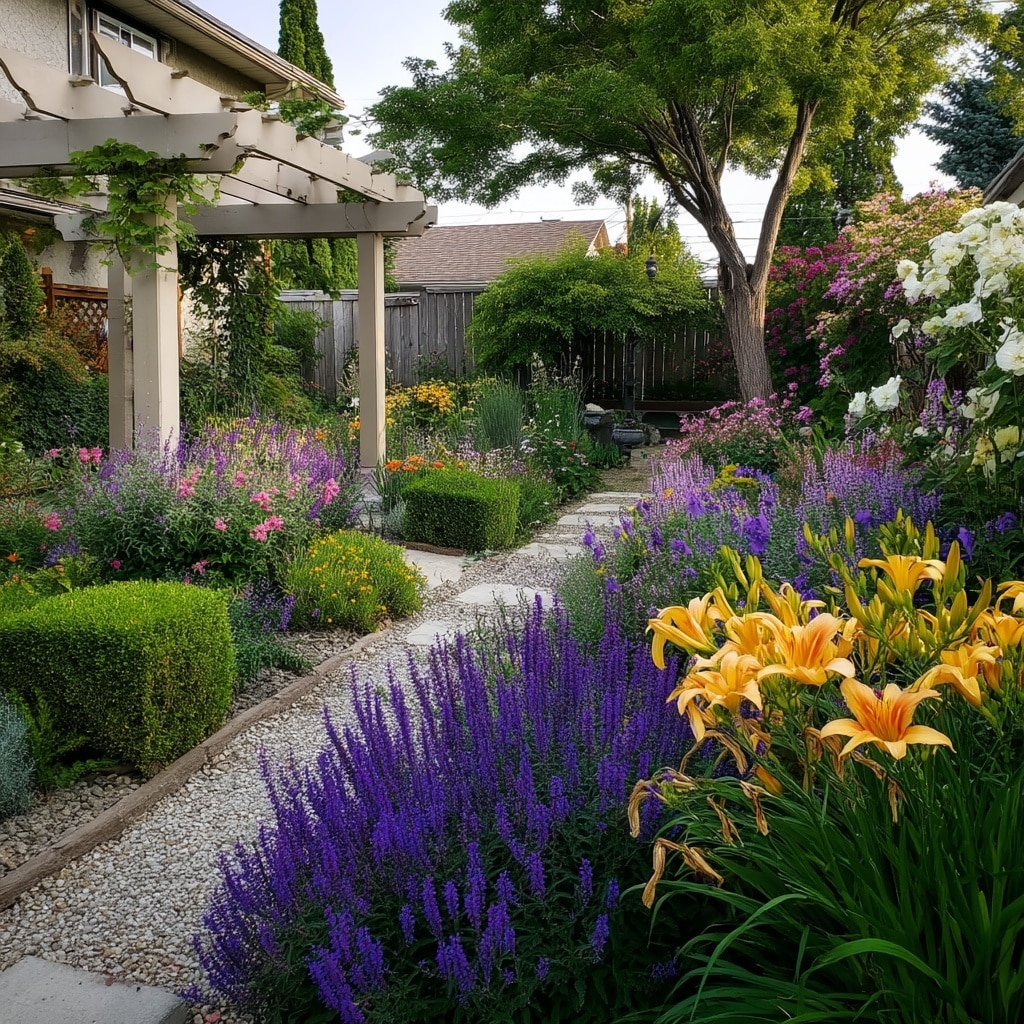
Among the most enduring garden ideas is pairing perennials with permanent hardscape elements like pergolas, trellises, or edging. Perennials bring seasonal color and form year after year, while hardscape structures add definition and strength to the landscape.
Start with a strong outline — a gravel pathway or low boxwood border helps separate plant beds from walkways and keeps things looking tidy. From there, fill your garden with dependable perennials such as salvia, daylilies, or echinacea, planting in clusters for a fuller, more established look.
A pergola or arbor can serve as both an entry point and a vertical anchor in your design. Let climbing roses or clematis weave through the structure to soften the lines and tie the architecture back into the garden itself. Don’t forget to use contrast: variegated foliage like dappled willow can brighten up the darker tones of purple blooms or evergreen shrubs.
7. Transform Narrow Spaces into Bloom-Filled Passages
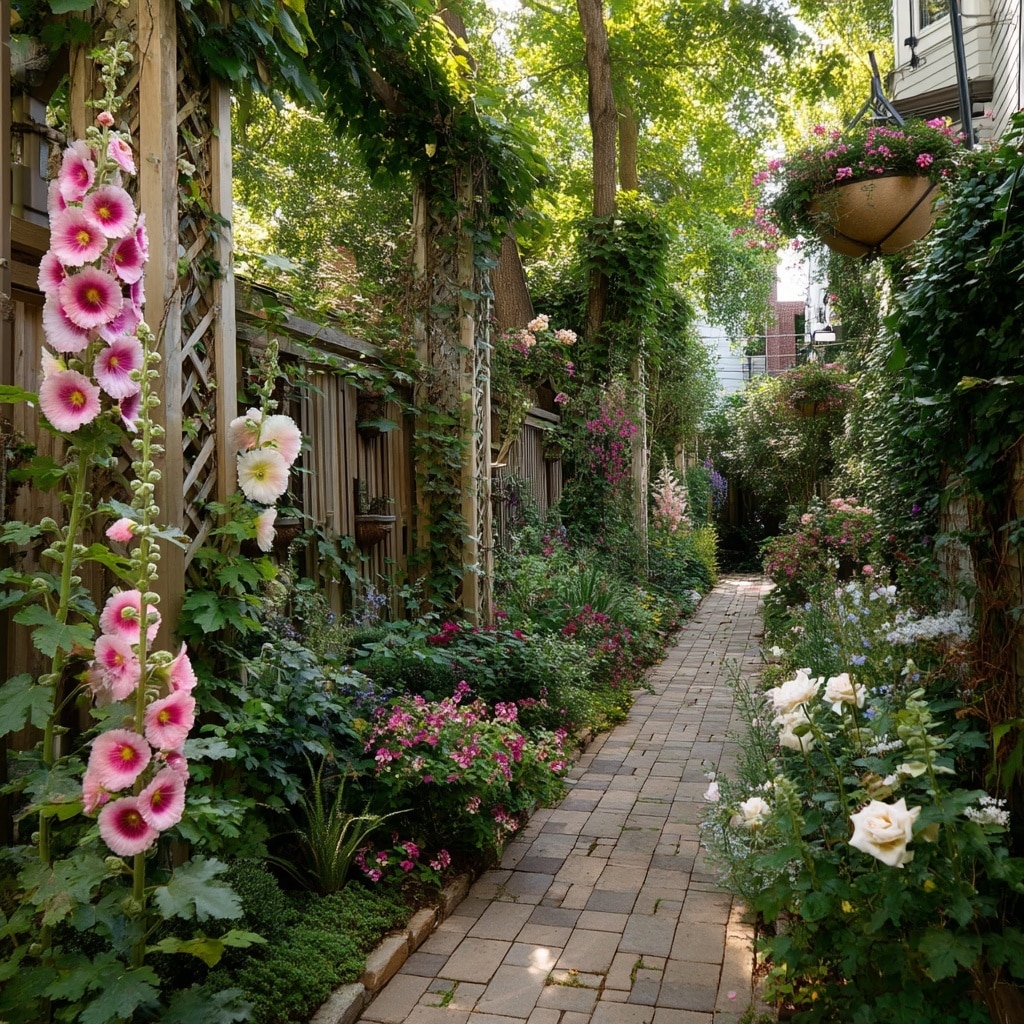
One of the most overlooked yet promising garden ideas is to treat your side yard or narrow space as a floral passageway instead of dead space. These slim areas are perfect for linear garden beds, creeping vines, and movable containers that inject color and life without overwhelming the walkway.
Line one side with a paved path for access, and on the opposite side, plant upright bloomers like hollyhocks or delphiniums for vertical interest. Between them, layer in shorter plants like begonias or trailing petunias to soften the space.
Movable pots add flexibility and can be rotated seasonally or shifted to highlight different parts of the garden. Climbing roses, ivy, or clematis can be trained up trellises or wall-mounted supports to draw the eye upward and make the space feel more expansive.
Adding a small decorative structure, such as a tuteur or garden lantern, helps break the monotony and creates a sense of design intention, even in tight quarters.
8. Use Sculptural Plants for Bold, Minimalist Style
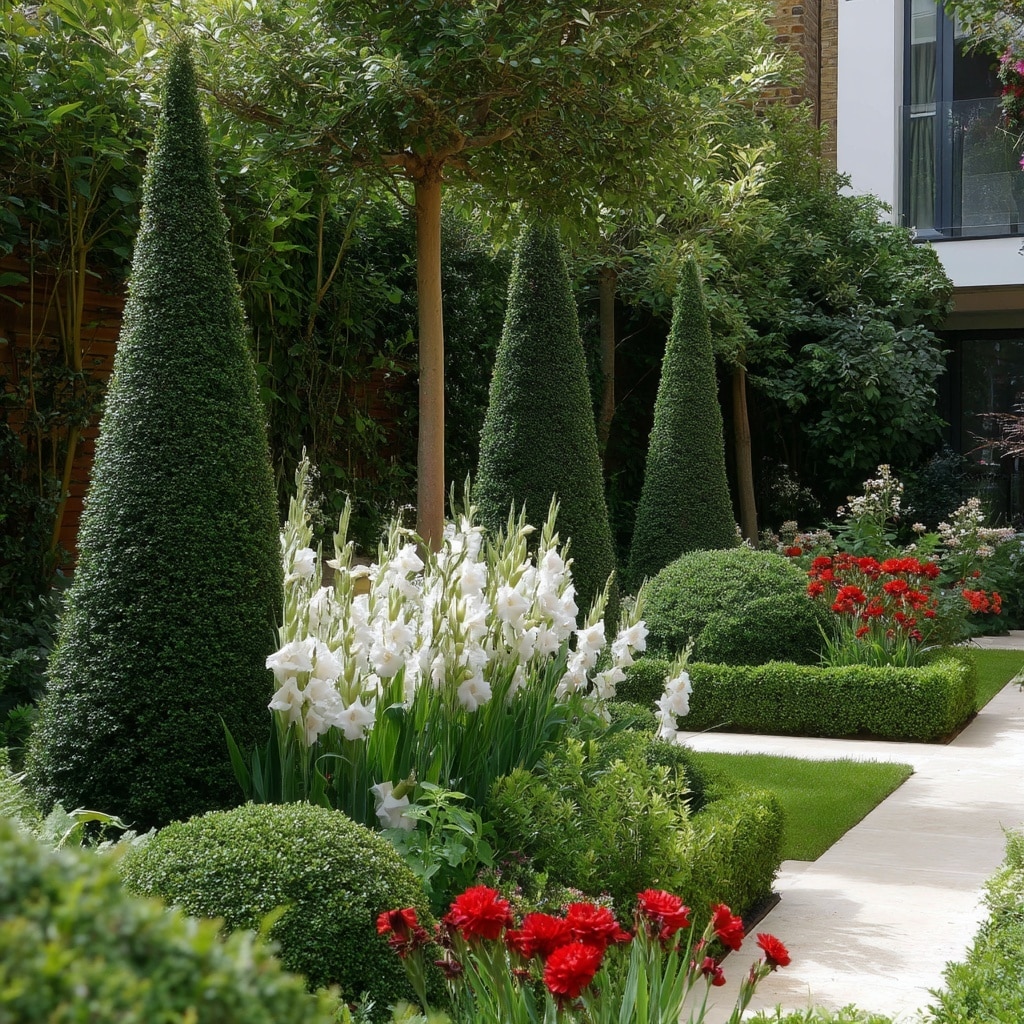
If you lean toward clean lines and modern landscaping, one of the most effective garden ideas is to treat your plants as living sculptures. Structural plants like topiary boxwoods, cone-shaped evergreens, or columnar junipers can anchor your garden visually and give it year-round interest.
Pair these bold forms with flower varieties that offer contrast in shape and texture. For example, soft drifts of ornamental grasses or loose clusters of zinnias or cosmos can balance the stiffness of geometric evergreens. The result is a garden that feels intentional but not sterile.
Don’t shy away from dramatic contrasts in color. White gladiolas against deep red dahlias can pop against a green backdrop, while neutral paving stones or mulch help tie it all together. If minimal maintenance is your goal, stick to mass plantings of just a few types — they offer visual impact with less upkeep.
This sculptural approach is especially useful in small gardens, where every plant and element needs to work double-duty for both beauty and function.
9. Make a Statement with Front Yard Flower Beds
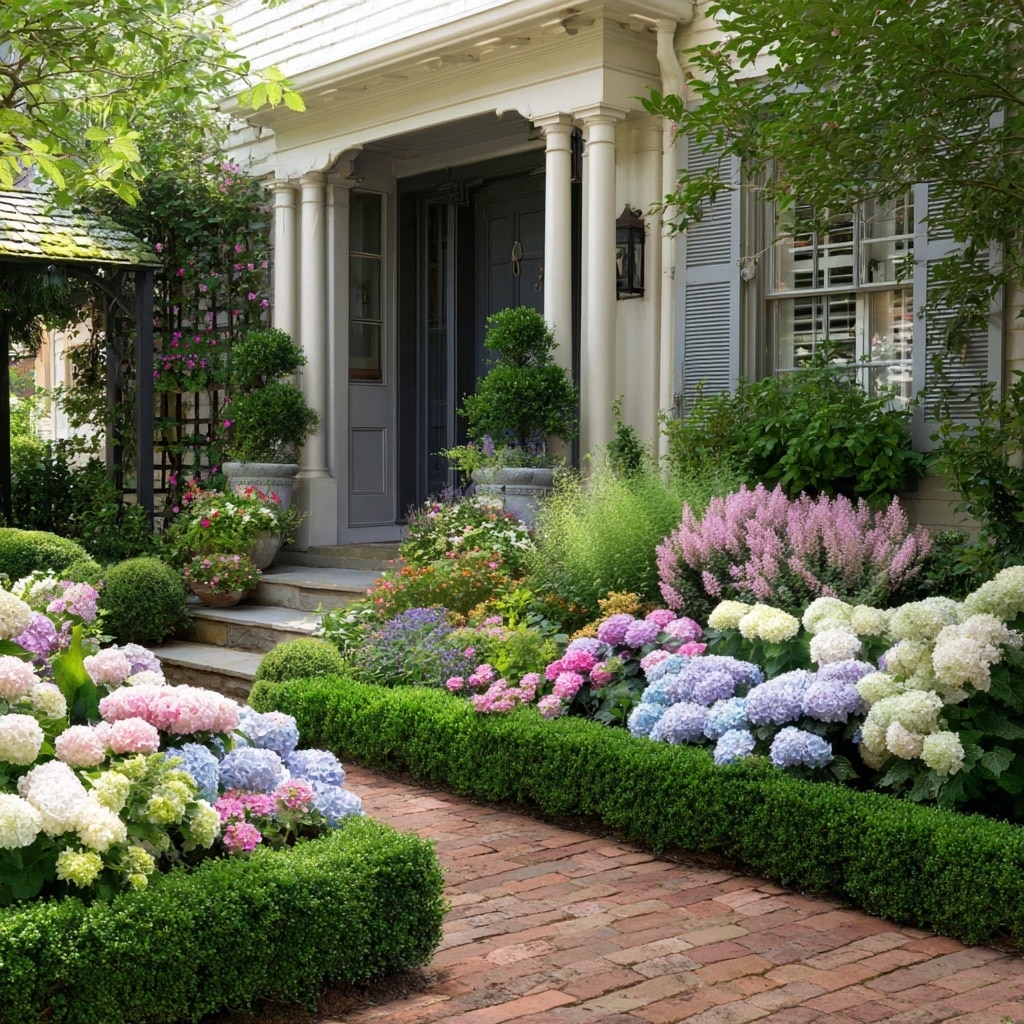
Your front yard is your home’s first impression — so one of the most powerful garden ideas is turning it into a vibrant, welcoming flower showcase. A thoughtfully designed flower bed near your entryway can boost curb appeal, soften architectural lines, and invite compliments from passersby.
Start with structure: use a miniature boxwood hedge or low ornamental grass to frame the bed and separate it from the lawn. Then fill the space with layered blooms in repeating patterns. Endless Summer hydrangeas, daylilies, and astilbe are great choices for consistency, as their shapes and colors play well together.
Don’t forget vertical elements. A painted trellis with climbing vines, such as clematis or morning glories, can frame the entrance or even extend over a gate or arbor to connect the garden with the home’s facade. Break up larger areas with short stretches of picket fencing, edging stones, or even a decorative mailbox post for charm and functionality.
This approach turns a standard yard into a constantly changing floral canvas — one that reflects your personality before guests even step inside.
10. Design Restful Retreats with Water and Layered Planting
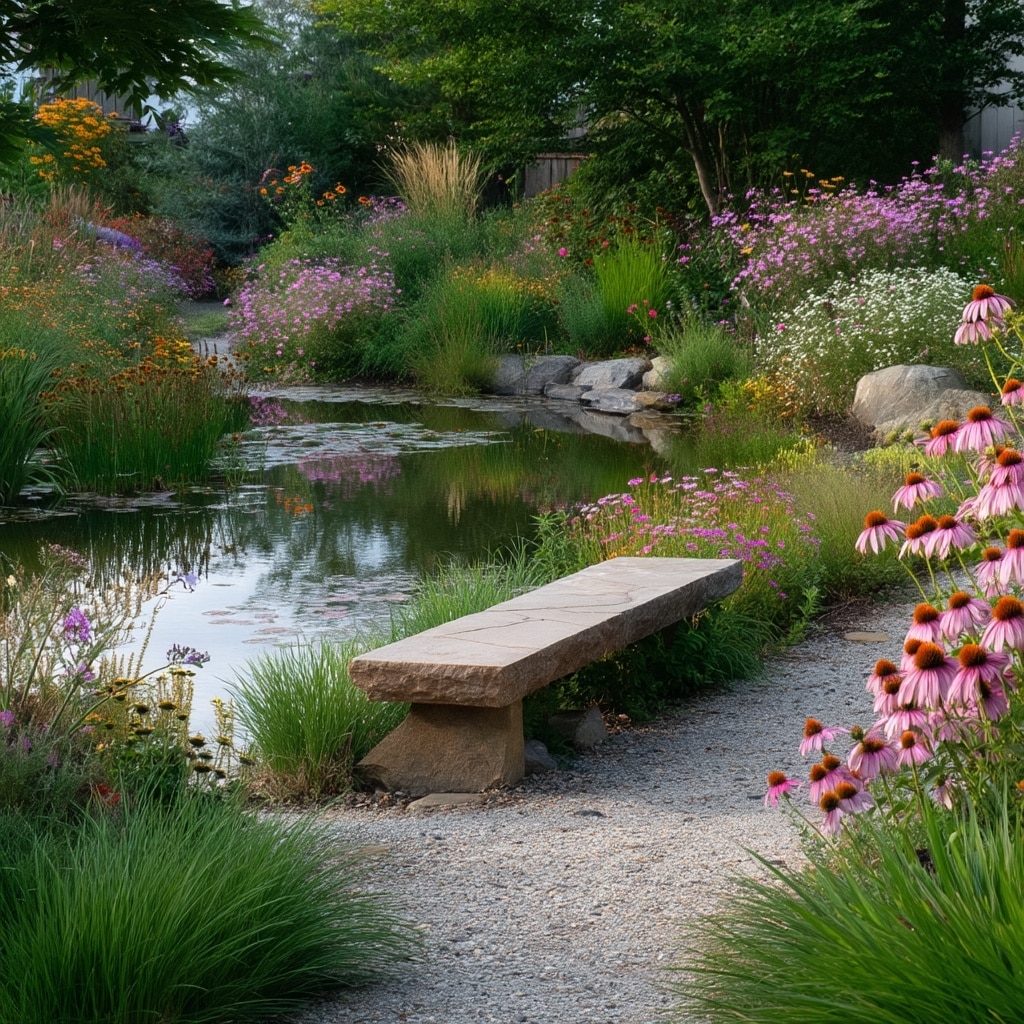
Among the most tranquil garden ideas is combining layered flower beds with water features to create a peaceful, sensory-rich retreat. Whether it’s a small pond, a bubbling fountain, or a reflecting basin, the sound and sight of water can elevate your garden from beautiful to truly calming.
Surround water features with soft, flowering perennials like phlox, coreopsis, or coneflowers. These plants provide continuous color throughout the season while attracting pollinators like butterflies and hummingbirds. Add texture with ornamental grasses or low mounding shrubs to give depth without blocking the view.
Paths that diverge in two directions — one toward a quiet bench, another toward a gazebo or shaded nook — invite lingering. If space allows, install a stone bench or sculptural seating to complete the scene. The goal is to create a spot where you can pause, breathe, and enjoy the moment, surrounded by nature’s rhythm.
This blend of hardscape and planting layers gives your garden a story-like quality — not just a view, but a place to be.
Conclusion
Inspiring garden ideas don’t require a massive yard or endless hours of labor — just thoughtful design, layered planting, and a few personal touches. Whether you’re working with a narrow side yard, a front entryway, or a spacious backyard, combining structure with seasonal blooms and natural elements will transform your outdoor space into something special. The best garden designs are the ones that feel like an extension of your personality — places where color, texture, and relaxation all come together in harmony.

